Fall may be the best time for gardening – period.
In fall, the days are cooler but the sun still shines. The ground is warm while the air has that crisp little nip in it. It’s the perfect time to get out into your garden and enjoy the new season.
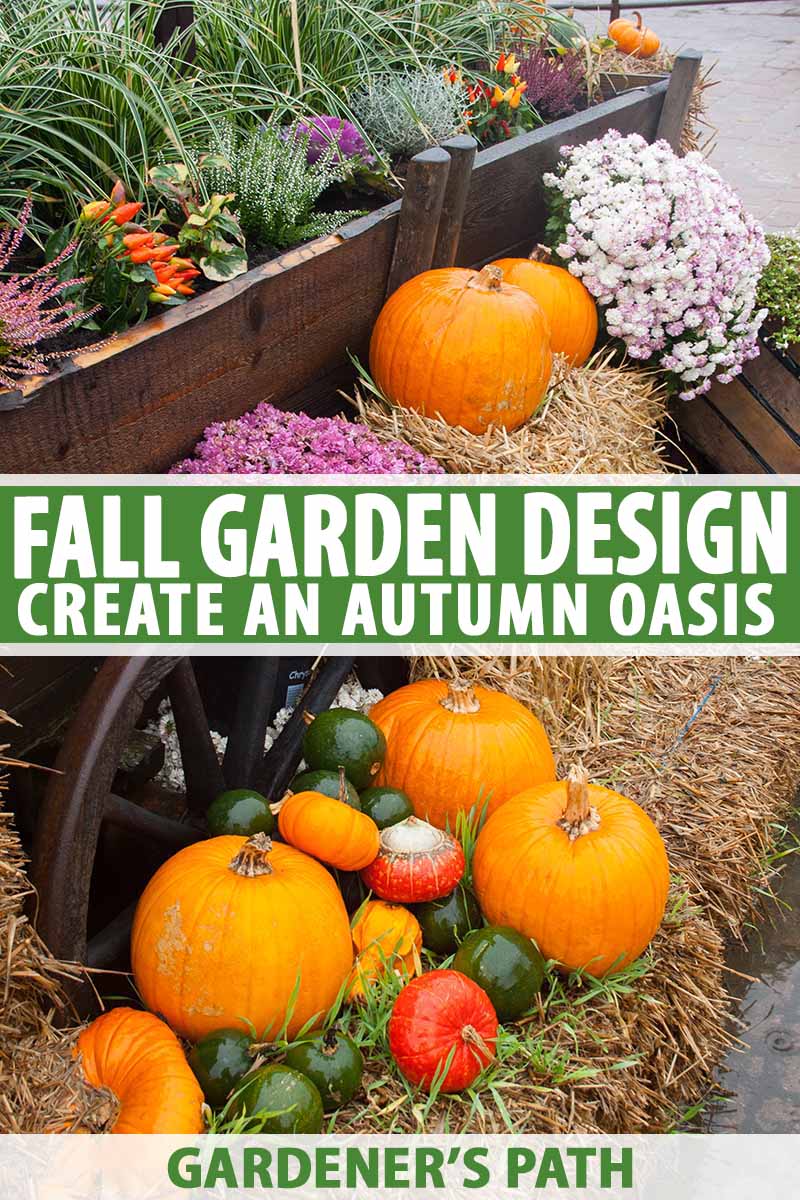
We link to vendors to help you find relevant products. If you buy from one of our links, we may earn a commission.
Whether you’re designing a porch display, planting a flowerbed, or redesigning an entire yard, you can create that cozy autumn feel.
Design your fall garden using…
What makes a landscape feel like autumn? The warm, earthy tones, the changing textures as trees shed their leaves, or the gentle light as the sun makes its way south.
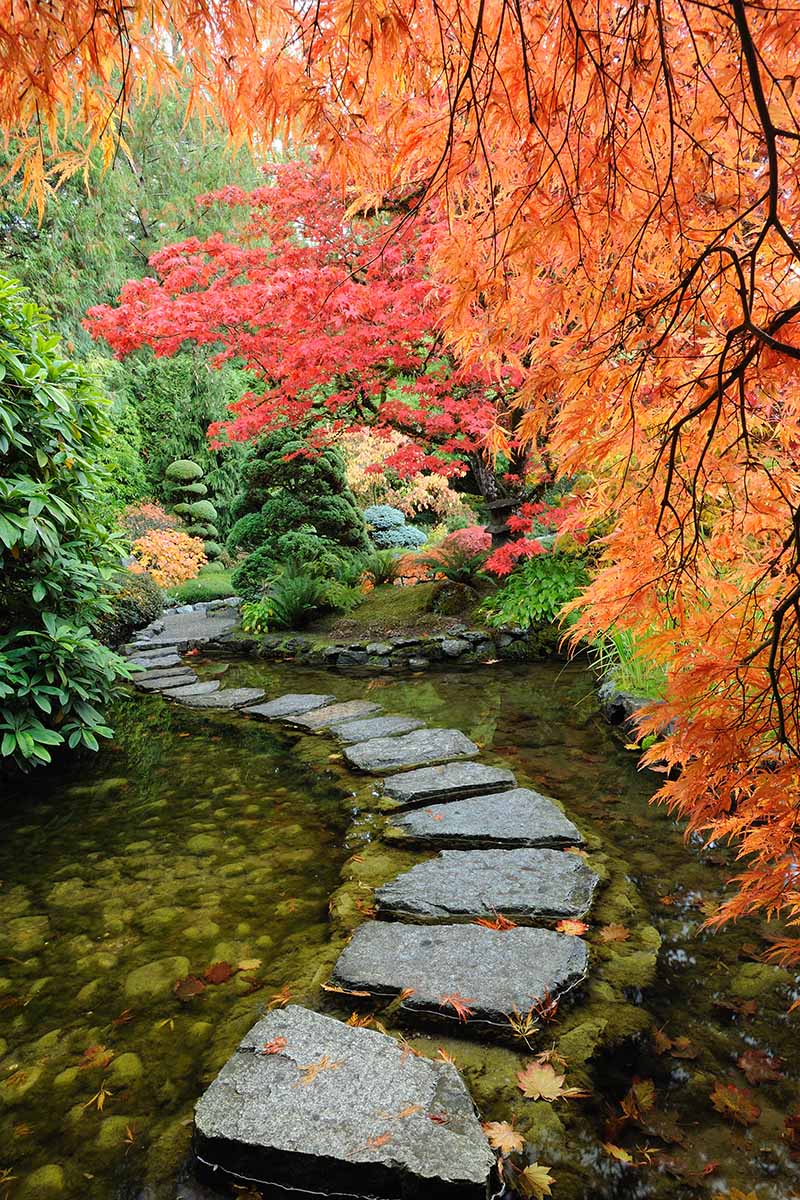
When planning your garden design, choosing plant combinations in terms of color, shape, texture, and light will help contribute to a cozy and inviting vibe.
Color
What colors do you associate with the harvest season? Bright pumpkin orange? Deep scarlet red? Cheery yellow? Wheat glinting golden in the late afternoon light?
Bronze and copper foliage, making its way down to the earth from the upper branches of trees?
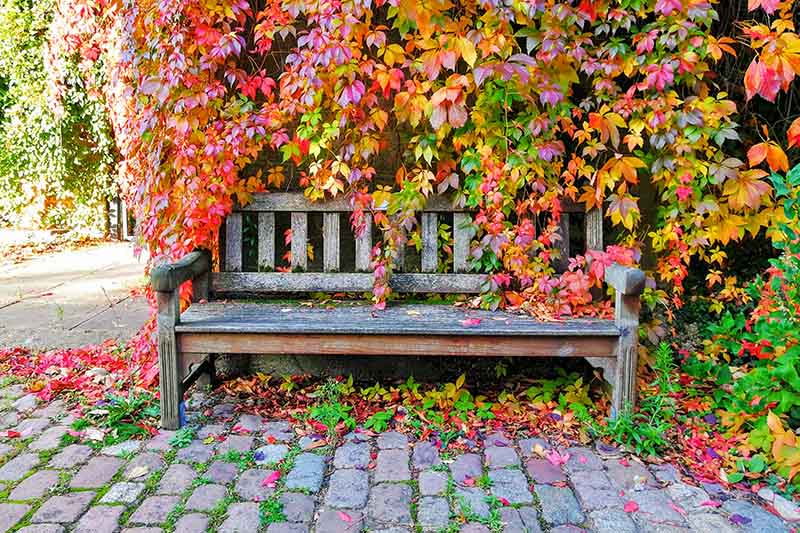
The world is awash with warm hues and vibrant tones at this time of year. You’ll find these colors in all sorts of plants, ranging from single-season annuals to long-lived trees.
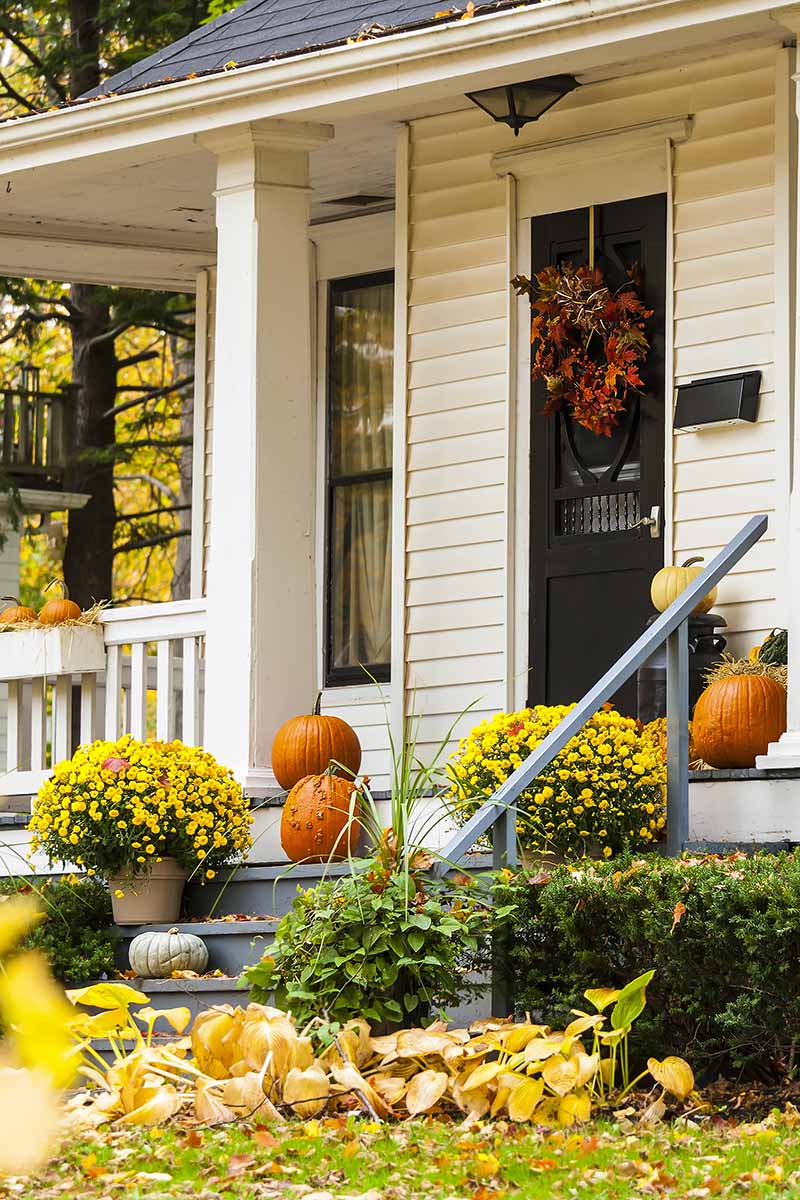
If you want warm-toned flowers, turn to chrysanthemum, blanket flower, or coreopsis.
If you need more colorful autumn foliage, consider Virginia creeper for a vine, blueberry for a shrub, or Japanese maple for a small tree.
Want brightly colored berries? American bittersweet or winterberry will be sure to delight.
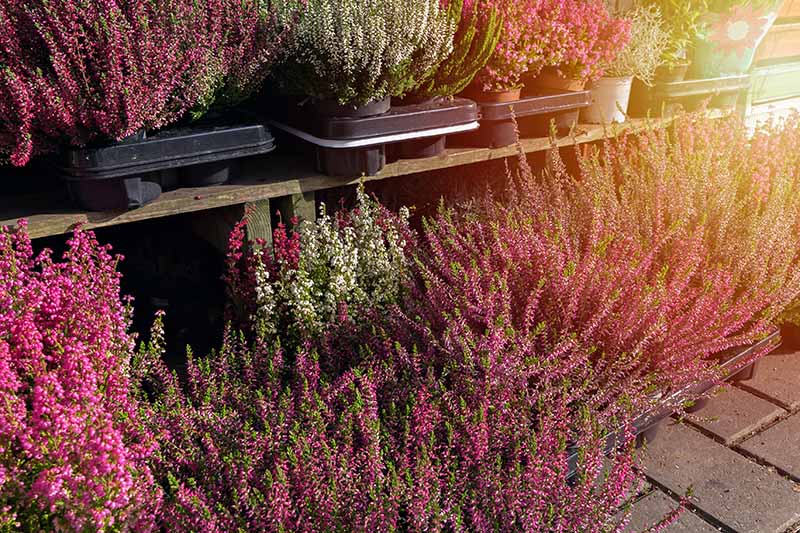
And while nature certainly hands us lots of yellows, oranges, and reds at this time of year, this is also when the natural world is preparing to take a break.
As summer’s flowers fade, we are left with more muted tones, and earthy hues.
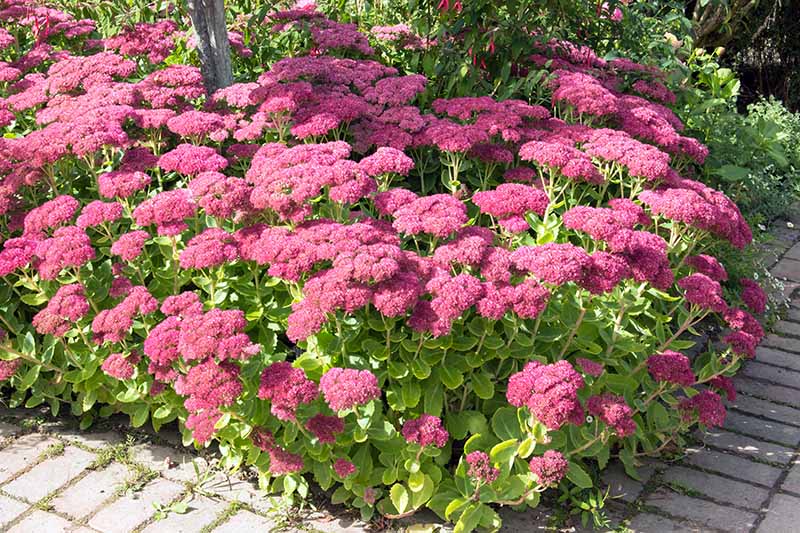
You may want to hint at this transition by including a palette of soft colors including tan, mauve, and lavender. You can find these colors in chrysanthemums, heathers, stonecrops, purple coneflowers, and asters.
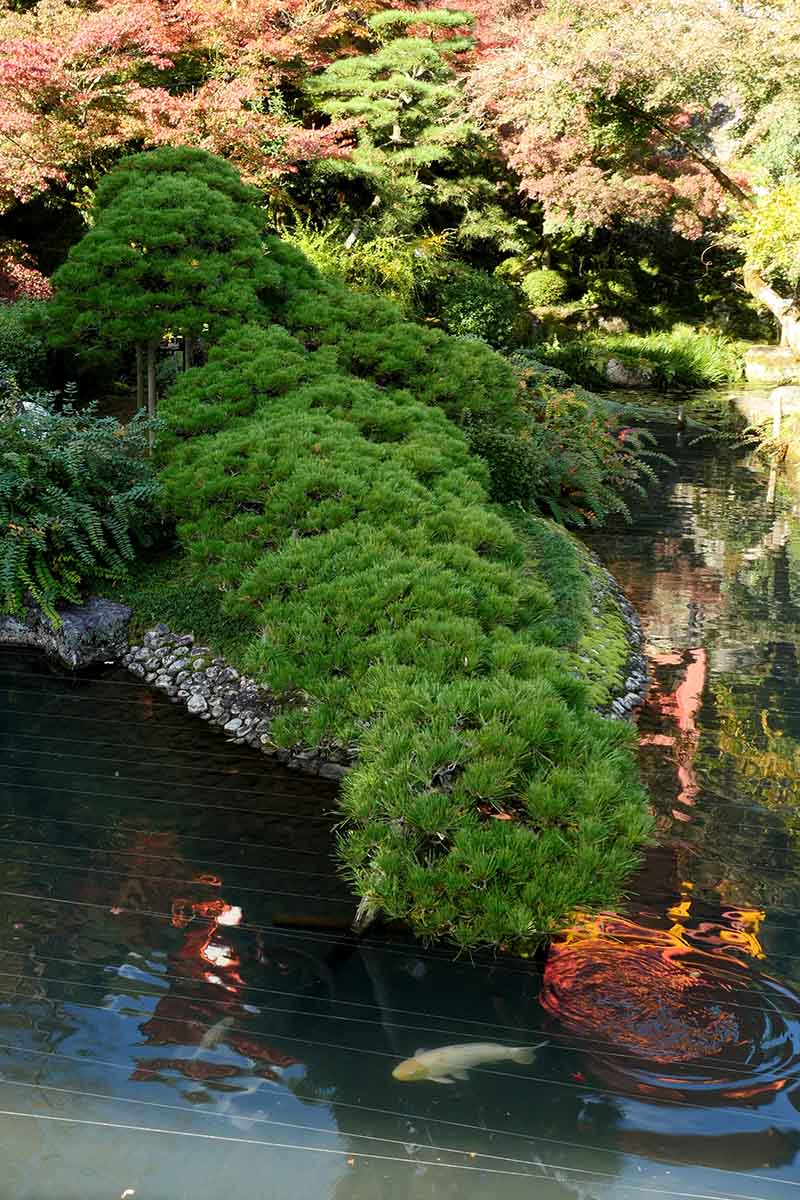
And don’t forget to include some green for contrast. Ornamental kale is a good annual for this purpose.
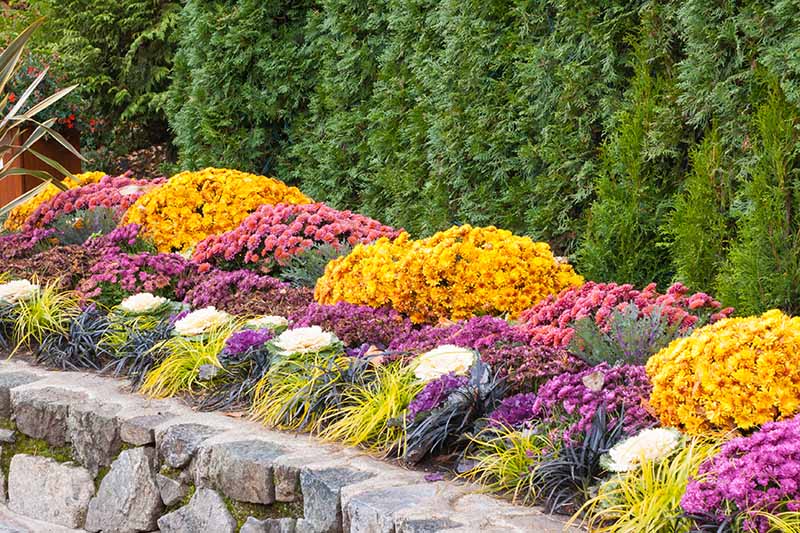
If you want longer-lasting plants, use conifers such as the low-growing mugo pine. Or choose arborvitaes as a backdrop for your more colorful plant choices.
Shape and Texture
In autumn, we see deciduous trees suddenly jump out of a solid green mass as they transition to their very own fall colors.
The particular shapes and textures of trees and shrubs make themselves very apparent in these new colors.
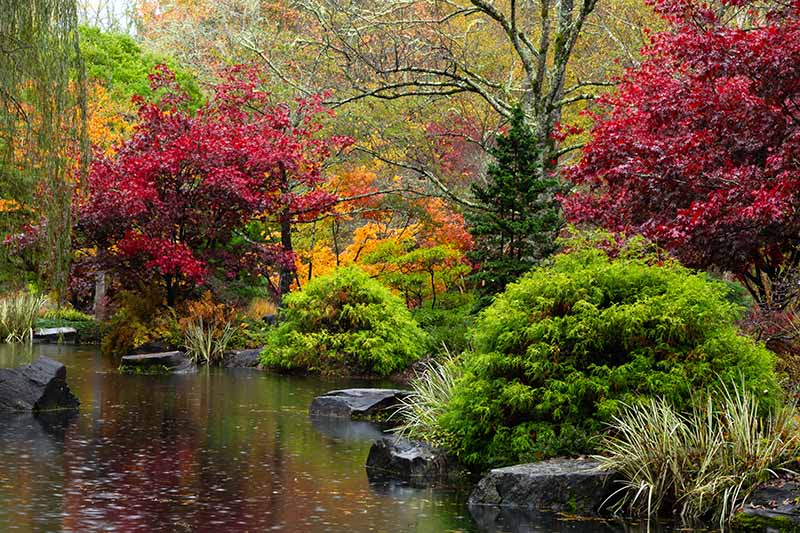
Think about the shapes and textures of the plants you want to use in your garden. Do your plants form round mounds, or are they wispy and misty?
What about the leaves? Are they wide and flat, smooth, or spiky?
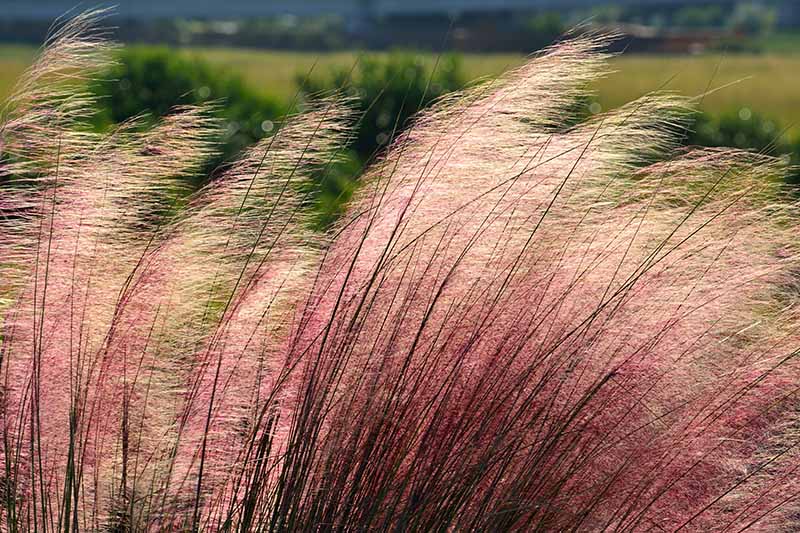
Place your low, mounding plantings – like mums or sedums – with some taller, wispier plants behind them – such as annual heather or ornamental grass.
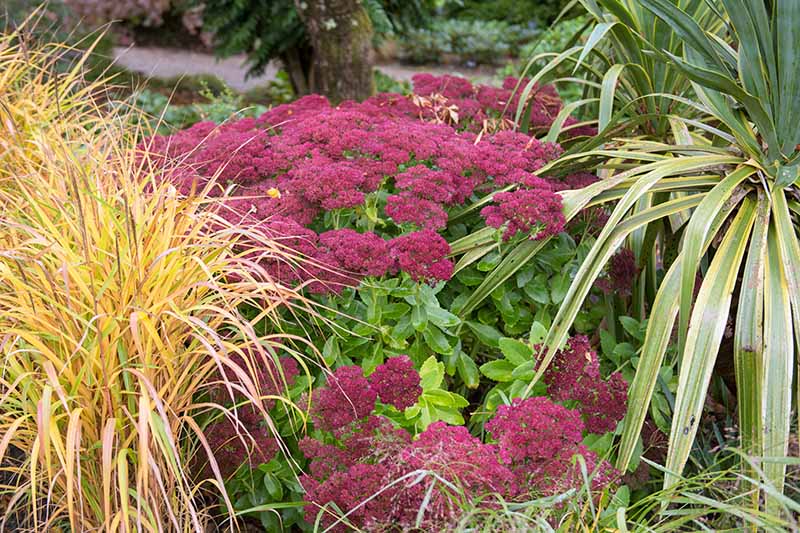
The contrasting textures and shapes will create interest. Pots, containers, and garden ornaments can help set the mood.
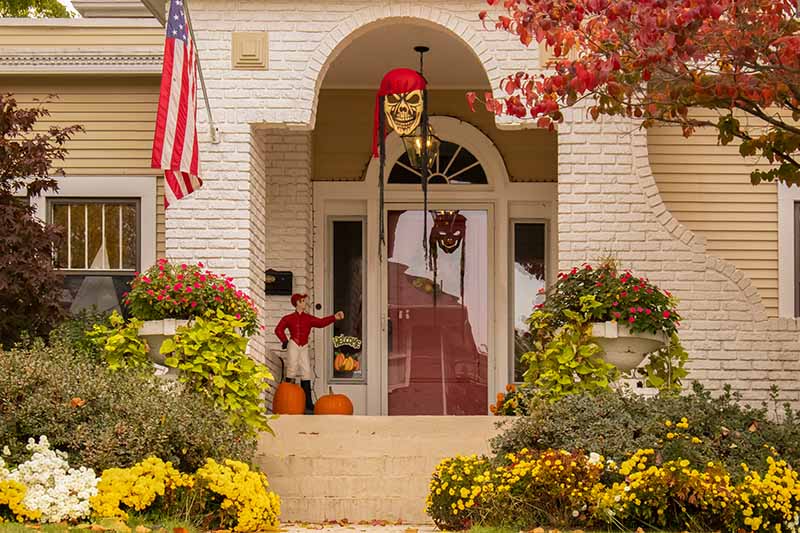
Low, mounding plants for this season include chrysanthemums, stonecrops, and ornamental kale.
Good wispy choices for this season include heathers and ornamental grasses.
Plant these among your foundational bushes and trees for a lovely layered effect.
Light
The sun is lower in the sky at this time of year, highlighting your plants with the warm, golden glow of beautiful autumnal sunlight – if you put them in the right place!
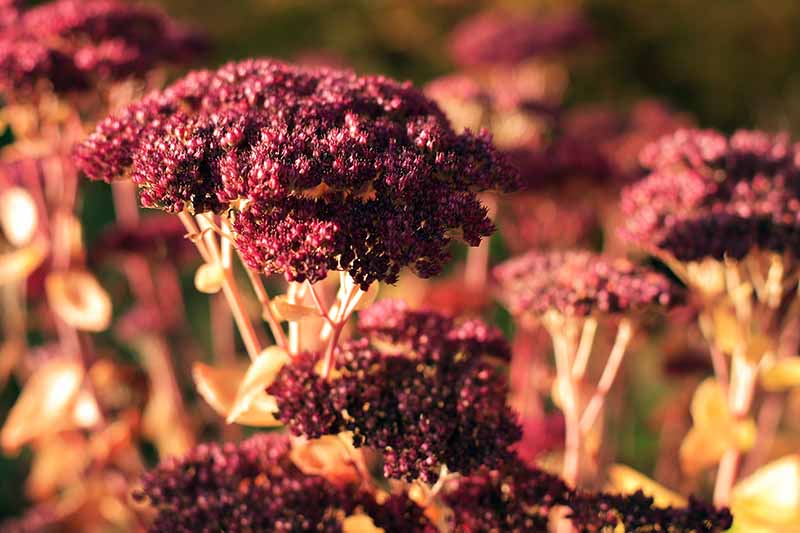
When the golden hour arrives, think about how your plants are going to look when the sun is hitting them from the west – the direction where the sun sets – at a low angle.
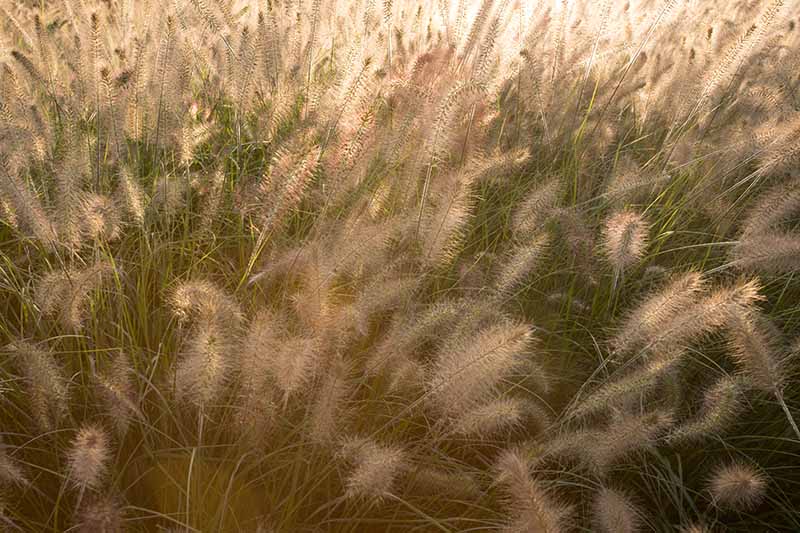
Look at where you plan to plant and ask yourself, is the sun going to enhance the colors and textures of this plant when I want it to, or not?
Inspiring Reads
By now you should have some ideas about how to use color, shape, texture, and light in your garden this autumn.
Maybe now you could use just a bit more inspiration. I love getting ideas from books for landscape design. Here are a few which might help you make your fall garden daydreams a reality:
Autumn Gardens by Ethne Clarke
This helpful guide to gardening after summer ends will teach you about plants that are useful not only for leaf color, but also for colorful decorative fruit.

It offers plenty of design advice, including guidance on using lighting and garden structure to your advantage.
This book is available on Amazon.
Fallscaping by Nancy J. Ondra and Stephanie Cohen
This book encourages the reader to think of autumn as a new growing season instead of just a time for putting your garden to bed.

Fallscaping: Extending Your Garden Season into Autumn
It comes with complete garden plans and plant suggestions, and is filled with beautiful photos. Find it on Amazon.
The Garden in Autumn by Allen Lacy
Are you an avid gardener in an area with a short growing season, like I am? This book is for us.

It contains advice for northern gardeners and includes tips to bring color to your fall garden even after the first frost. Find this book on Amazon now.
Fall in Love with Gardening Again
Your very own lovely autumn landscape will help brighten your spirits as the days get shorter and the weather less inviting. So don’t overlook this chance to get outside and create some autumnal attractions in your yard.
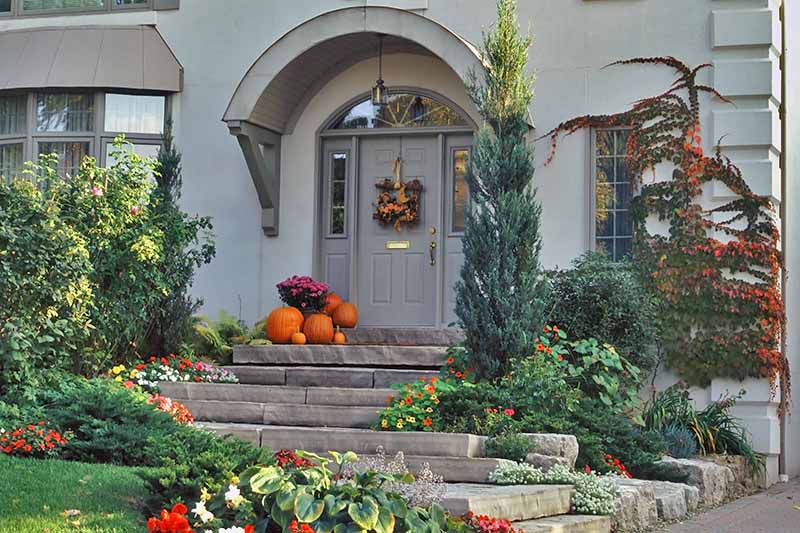
What colors and textures are you putting into your fall garden this year? Have you found the perfect spot in your yard to let golden afternoon sunlight shine some magic on your new plantings? Tell us about it in the comments.
Admit it, you can’t get enough of fall gardening, can you? If you find this to be true, read on:
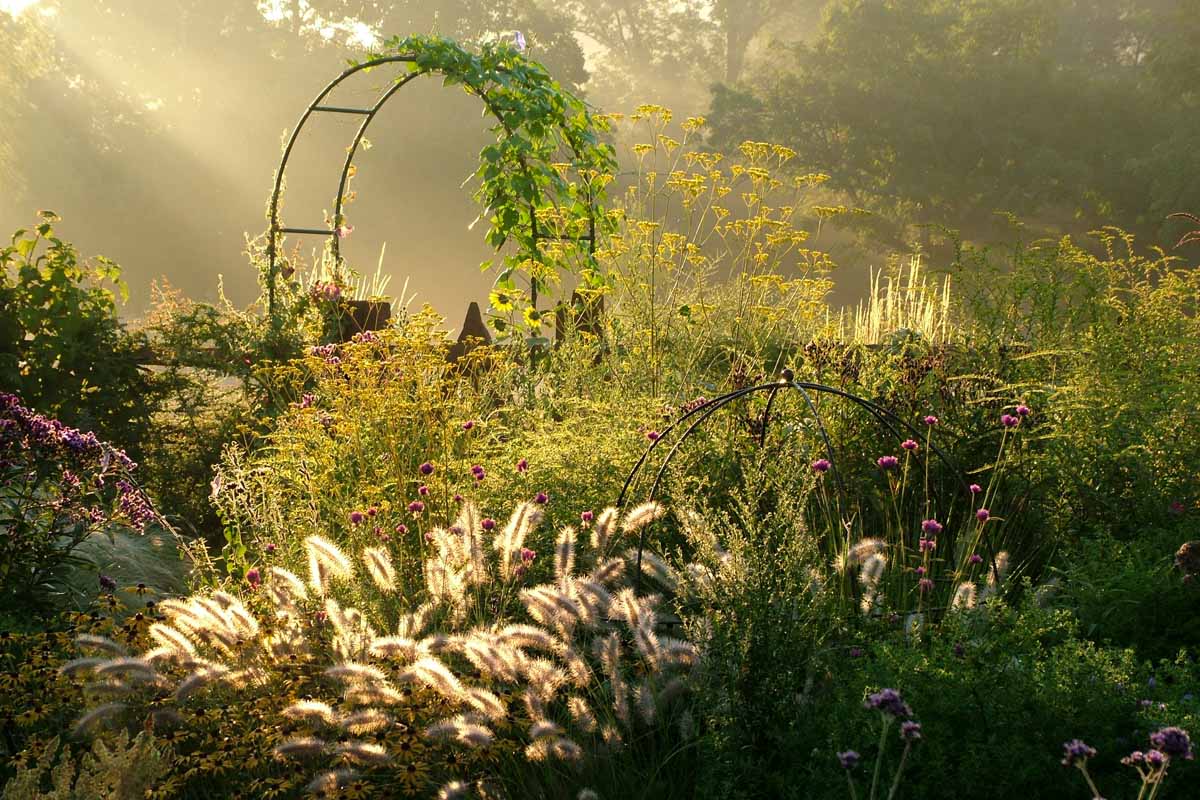
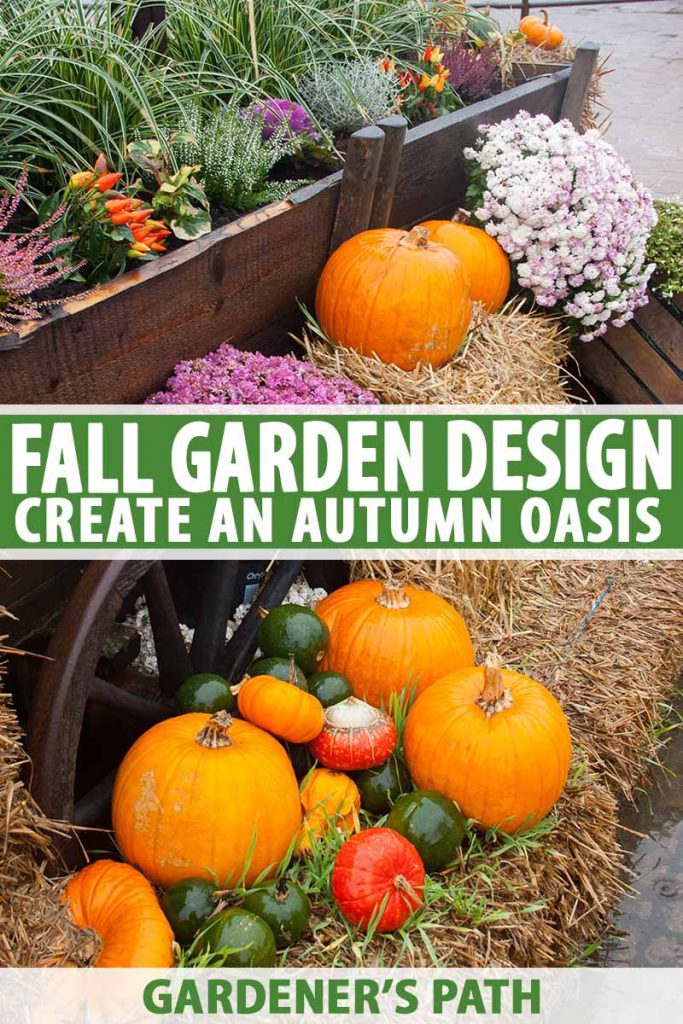
Lovely! But oh you must know that Virginia Creeper is terrible. Poisonous, the birds won’t even eat the berries, it grows out of control quickly and will topple fences! Also noticed climbing creeping up our 60 foot trees. We tore it out three years in a row and still it comes back. Virginia Creeper is the worst, causes rashes in sensitive folks and could seriously harm the doggies. Evil vine!! Chokes out innocent plants. Starts coming up in the lawn. If your neighbor has it, than you will have it- and vice versa. People think it is so pretty, well,… Read more »
Thanks for sharing, Rachael! You’re right- this plant does absolutely have the propensity to be invasive under the right conditions, and the calcium oxalate that it contains can cause rashes, while plants are poisonous to dogs and humans as well. But we think it does still have some value to offer in certain gardens! According to the USDA, many types of birds and rodents actually do eat parts of the plant (berries and leaves) and they can provide natural cover for nesting animals.